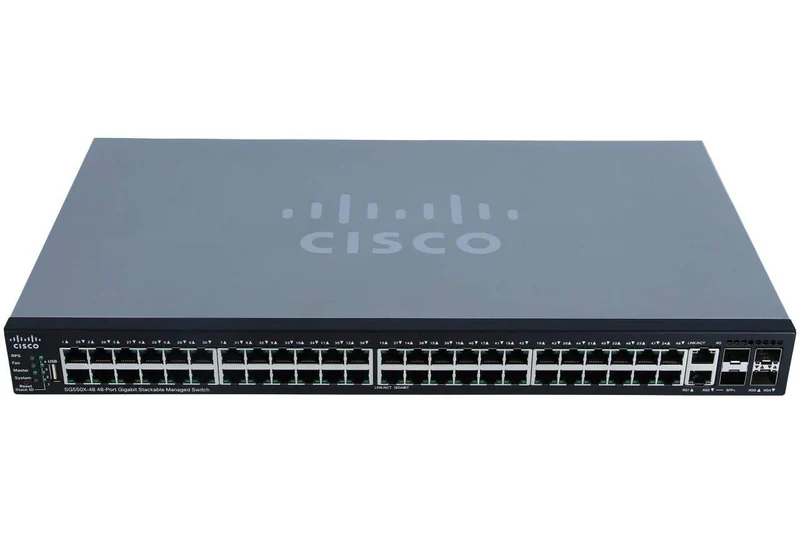Cisco Switches: Best Models, Features & Global Distributor
1. Introduction
2. Guide on How to Understand Cisco Switch Model Numbers
3. Top Cisco Catalyst Switches – C9200 & C9300 Series
4. Understanding How to Select the Right Cisco C9500 or Nexus Switch
5. Understanding How to Pick the Correct Power Supply & Stacking Kits
6. How to Verify Genuine Cisco Products and Avoid Counterfeits?
7. Tips for Getting the Best Pricing & Fast Global Delivery
Wrapping up
1. Introduction
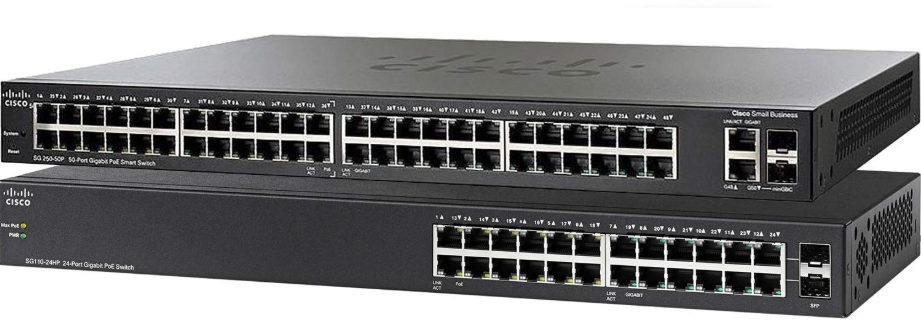
In the past 40 years, Cisco Systems has made a name for itself in the IT space. This company brings transformative influence on modern computing & networking. Today, Cisco offers different types of hardware & software products.
Among these products, Cisco switches stand out. They’re the cornerstone of modern network infrastructure. Many enterprises rely on these switches today because of their scalability, performance, and reliability.
Cisco’s enterprise-level switches are designed to address complex networking needs. They offer enhanced security. They also provide seamless connectivity & unlimited accessibility.
Today, Cisco’s switches have basic and advanced models. The giant company’s high-end products include:
● Cisco Catalyst
● Nexus series
● Cisco Catalyst IE
These models allow organizations to support high-bandwidth apps and cloud-based operations.
Here are a few benefits of Cisco switches:
● Robust architecture: This design allows organizations to enjoy greater uptime. It also results in uninterrupted data flow.
● Superior network resilience: Cisco switches come with redundant power supplies. They also pack advanced traffic management. These things will help your organization to maintain network resilience.
● Intelligent automation: These switches offer intelligent automation & centralized management. With these offerings, your organizations will be able monitor, troubleshoot, and optimize their system performance from a single interface.
● Robust security: Cisco switches have built-in protection features. These offerings, which you can find below, ensure full protection of your sensitive data.
○ Segmentation
○ Access control lists
○ Threat detection
The bottom line is—Cisco switches are effective enough to help you run a reliable, scalable, and streamlined IT operations. They offer a solid foundation for long-term operational success.
2. Guide on How to Understand Cisco Switch Model Numbers
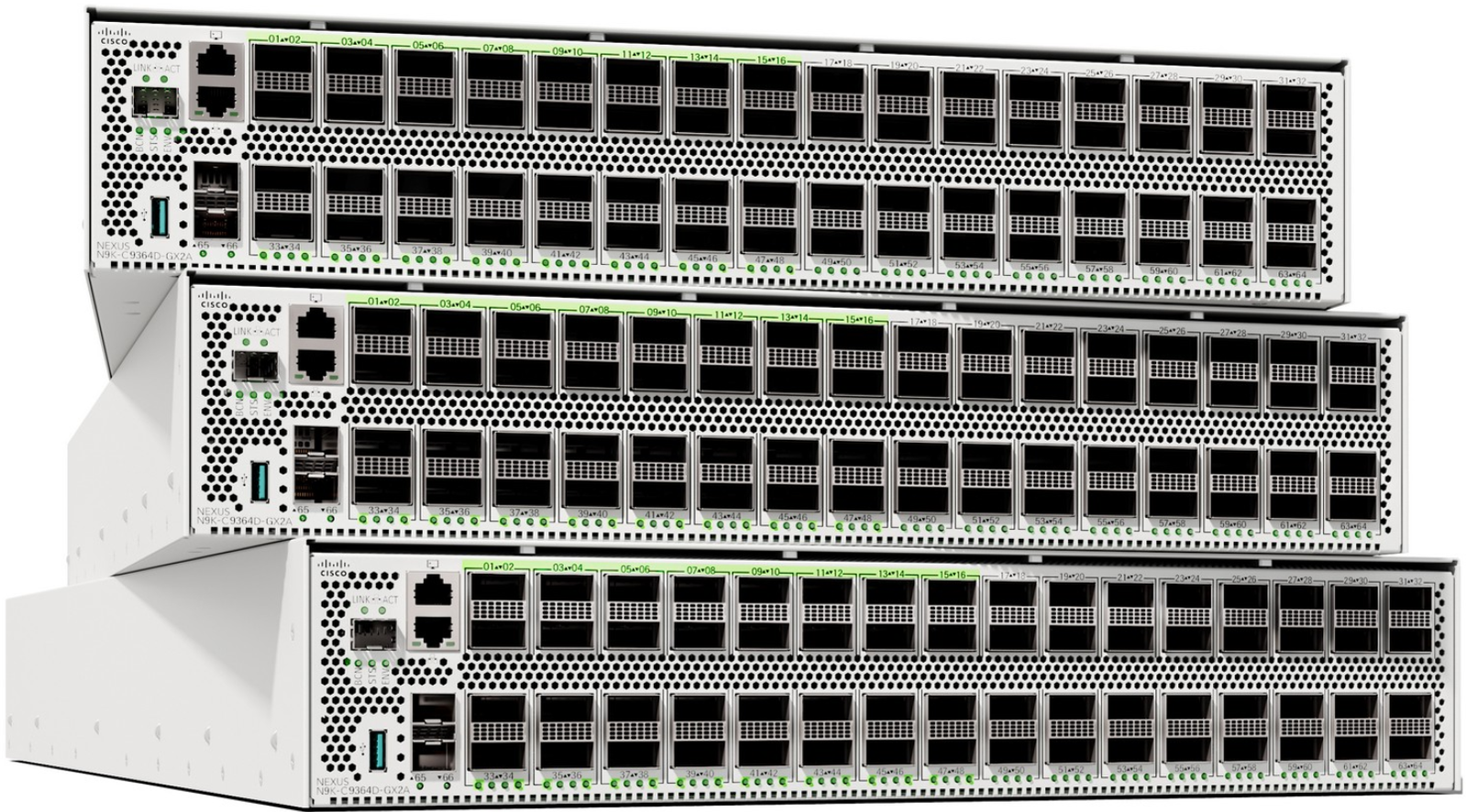
To get started with Cisco switches, you need to first understand its model numbers. Doing this will allow you to select hardware that meets your networking needs.
As a beginner, the naming conventions may seem slightly complex. However, the following breakdown will help you understand them easily. By knowing these conventions, you ‘ll never struggle to choose switches that align with your specific port, feature, and performance needs.
For easy explanation, we’ll be using these two model numbers:
● C9200L-48P-4G-E
● C9300-48T-A
Reading C9200L-48P-4G-E
C9200L means the Catalyst 9200 series (Lite) model. Lite (L) models are more cost-effective than standard models. They’re fixed-access switches and only pack a few advanced features.
48P indicates the port count. It means 48 Power over Ethernet (PoE) ports. These ports effectively power access points & IP phones. 4G indicates four Gigabit SFP uplink ports, while E indicates the Network Essentials software license.
Reading C9300-48T-A
C9300 also indicates the Catalyst 9300 series model. It’s more advanced than the Lite model above. It’s designed to support higher stacking capabilities & performance.
4T indicates 48 standard Ethernet ports. These particular ports are non-PoE. A signifies the Network Advantage license. This comes with enhanced Layer 3 features, such as advanced routing.
Of course, knowing Cisco’s model structure comes with many benefits. It lets you make better decisions based on performance levels, licensing needs, and feature sets. Furthermore, it allows you to choose compatible switches within your existing infrastructure.
3. Top Cisco Catalyst Switches – C9200 & C9300 Series

Today, Cisco Catalyst is available in different models. Some common examples are the C9200 & C9300 series. Both switches are excellent solutions for enterprise network access.
However, you need to know that Cisco Catalyst 9200 and 9300 Series cater to different business needs. The C9200 series is available in two types—C9200L & C9200. The same goes for the C9300 series—it’s available in C9300L & C9300.
Before choosing between these Cisco Catalyst models, you need to factor in a few things, such as:
● Your business needs
● Network complexity
● Your budgets
● Performance requirements
● Stacking needs
● PoE
● Licensing
The following in-depth comparison will guide you on how to make the right decision when choosing Cisco Catalyst switches:
C9200L vs. C9200
As earlier mentioned, C2900L is a fixed-access switch. It’s affordable and comes with non-removable power supplies & fans. It’s a lite model, meaning its hardware flexibility is limited.
C9200, on the other hand, is the standard model. It comes with modular power supplies & fans. As such, it’s easier to maintain. It also provides better redundancy.
Speaking of port capabilities, both models offer support for PoE/PoE+. The only difference is that the standard C9200 model gives higher scalability and greater uplink options. It comes with 1G/10G, while the Lite model only has 1G.
In terms of stacking, you can rely on C9200 for StackWise-160 support (up to 160 Gbps stacking bandwidth). The C9200L model, however, is only capable of supporting StackWise-80.
C9300L vs. C9300
As a Lite model, C9300L is way more affordable than the standard C9300 model. It’s a fixed-access switch, meaning it only works for fixed uplinks. Furthermore, C9300L only carries lower stacking capabilities and fewer hardware & software features.
As the flagship model, C9300 works perfectly for modular uplinks. It also features higher stacking capabilities up to 480 Gbps stacking bandwidth (or full StackWise-480).
Another highlight of the standard C9300 model is that it supports UPOE—Universal Power Over Ethernet. This means you can use it for high-powered devices, such as video endpoints.
In terms of licensing, all the aforementioned models require Cisco DNA licensing. But this is available in two different tiers—Essentials & Advantage. Essentials are recommended for baseline features while Advantage is perfect for advanced features, including segmentation, security, and top-tier routing.
Tips for choosing betweening C9200L, C9200, C9300L, and C9300
Your business size certainly matters when choosing between these switches.
● We recommend choosing a Lite model (C9200L or C9300L) if you have smaller offices. They are also ideal for budget-friendly deployments that only require basic access needs.
● For mid-sized environments, we recommend using Cisco Catalyst 9200. This is especially true if you only need moderate flexibility & scalability.
● The C9300 model is a high-end Cisco Switch. As such, we strongly recommend it for large enterprises. This solution offers advanced features, top-tier s
ecurity, and high performance.
4. Understanding How to Select the Right Cisco C9500 or Nexus Switch

Recap that Catalyst isn’t the only high-end product offered by Cisco. This company also offers Nexus switches. Now, let’s compare both the Catalyst and Nexus series by using their top-tier models—C9500 & N9K series.
We’ll start by saying that choosing between these models depends on:
● Your company’s data center
● Core networking needs
Cisco Catalyst C9500
This model is a top-end enterprise core & aggregation layer switch. They’re specifically designed for high-performance enterprise networks. Organizations favor them because they offer advanced features, such as:
● C9500 comes with advanced Layer 3 support. You can also expect policy control and full routing.
● Furthermore, this top-tier switch model minimizes downtime. This is possible because of its built-in high availability & hot-swappable components.
● Moreover, this model offers strong security features. Examples include TrustSec and MACsec encryption.
● For standing capabilities, C9500 supports Cisco StackWise Virtual. This means you can always operate two switches as a single logic unit.
That said, here’s a quick question: When exactly should you invest in C9500? The simple answer—now! Choose this model if your organization requires a reliable, high-throughput switch. It’s perfect for both the enterprise core and distribution layer.
Cisco Nexus (N9K Series)
Enough about the C9500 model. Let’s talk about the Nexus 9000 Series (N9K) model too. When exactly should you choose it for your organization?
Well, the Nexus 9000 Series (N9K) model is specifically designed for data centers and cloud-scale spaces. Organizations favor it because of its advanced features, such as:
● Up to 40G/100G port support
● The switch model comes optimized for high-density, low-latency environments.
● The N9K series comes integrated with Cisco Application Centric Infrastructure (ACI). This seamless integration ensur
es centralized, automated network management. It enhances agility, security, and scalability.
That said, here’s a quick question: when should your organization choose this top-tier Nexus switch model? We strongly recommend Nexus for upgrading or building data centers. This is especially true if you prioritize performance, virtualization, and programmability.
Bottom line: C9500 is specifically recommended for enterprise cores and campus networks. Nexus N9K, on the other hand, is perfect for data centers. Your location and how you plan to deploy matter when choosing between the two models.
5. Understanding How to Pick the Correct Power Supply & Stacking Kits
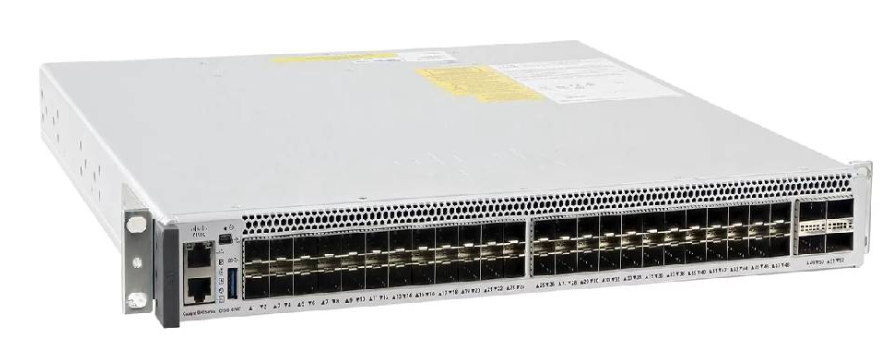
Like the switch model, choosing the right power supply and stacking kits is also crucial. It doesn’t only ensure proper switch performance. In addition, it also ensures proper scalability, redundancy, and network setup.
That said, below are a few best practices for choosing the right components:
Power Supplies (PWR-C Series)
To choose the right power supplies, you need to start by understanding the strengths of each available Cisco model.
● For instance, PWR-C1 is highly compatible with Cisco Catalyst 3850/9300 Series. You’ll find it in three main variants—350W, 715W, and 1100W. We strongly recommend it for moderate PoE needs.
● PWR-C4 is slightly advanced. It’s perfect for the Catalyst 9200 Series and available in two variants—600W and 1000W. You should only choose it if your environment requires higher PoE budgets.
● PWR-C5 offers support for the Catalyst 9300 Series. It gives up to 1100W output. It’s also backward compatible with the PWR-C1 slots.
● PWR-C6 is ideal for Catalyst 9300X switch models. Its two main variants are 950W and 1600W. They both support UPOE+, making them ideal for high-powered devices.
To pick power supplies, make sure to only choose products that are compatible with your switch model & PoE power needs.
Stacking kits
For your stacking kits, we recommend using the recommended products—STACK-KITs. Interestingly, these products are available in two main models:
● STACK-T1: This model is ideal for C9200/C9200L switches. It supports up to 160/80 Gbps stacking bandwidth, respectively (StackWise 80/160).
● STACK-KIT-1M/3M is ideal for the C9300 Series. It supports up to 480 Gbps stacking bandwidth (StackWise-480). This model is available in both 1m and 3m cable lengths.
Factor in your switch model and bandwidth requirements when picking the ideal stacking kits. For optimal performance and seamless scalability, the right product should match your needs.
6. How to Verify Genuine Cisco Products and Avoid Counterfeits?
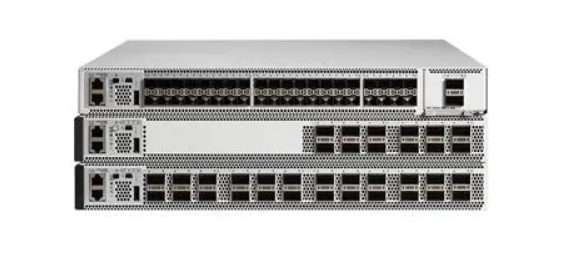
Understand that not all products with Cisco labels are genuine. Today, many counterfeit & unauthorized products exist out there. Buying these switches won’t only compromise your network security and performance. They may also lead to system failures & compatibility issues.
To avoid these issues, you need to understand exactly how to spot genuine Cisco switches. That said, below are a few best practices we recommend:
● Buy from Cisco-certified distributors
For peace of mind, ensure to only buy your switches from Cisco-authorized distributors. These vendors have verified access to Cisco’s international supply chain. Buying from them means you’re shopping indirectly with Cisco itself.
● Check serial numbers
Another effective way to verify the quality of Cisco switches is by using the company’s Device Validation Tool. Cisco’s SmartNet allows you to perform eligibility checks on its equipment.
Use the validation tool to verify the serial numbers on the Cisco switches. With this approach, you can easily understand whether or not the hardware is genuine. Authenticity verification is crucial because you’ll only receive licensing and support on genuine equipment.
● Check packaging & labels
You can also verify the authenticity of Cisco switches by checking the packaging and labels. Genuine Cisco products only come with high-quality packaging. Furthermore, the packaging should come with tamper-evident seals.
In addition, the switches should come with Cisco’s standardized product labels. If the packaging and seals look unbranded or used, then avoid the equipment completely.
● Request proof of origin
Every Cisco equipment should come with proof of origin. Reputable distributors understand the importance of showing you this thing.
Bottom line: When buying Cisco switches, make sure you ask the vendor to provide traceability. By partnering with us, you can always expect import documentation and invoices, and source history. All these things will help you rest assured that your switches are authentic.
● Check for licensing validity
Licensing is a crucial factor to consider when buying Cisco equipment. In most cases, fake switches often fail when you try registering them under Smart Licensing.
Bottom line: if the product fails to support full Cisco license registration, then it’s not worth buying.
Why Choose Us?
We recommend partnering with us today if you need authentic Cisco switches. That’s so because we’re a trusted global Cisco distributor. Below are a few things you can expect from shopping with us:
● 100% authentic Cisco switches & equipment
● Products with variable serial numbers
● Competitive pricing
● Global shipping—fast & secure
We’re fully committed to delivering a transparent shipping experience. As such, all shipments are completely traceable. Besides, we’ll also follow Cisco’s global standards when shipping your products.
7. Tips for Getting the Best Pricing & Fast Global Delivery
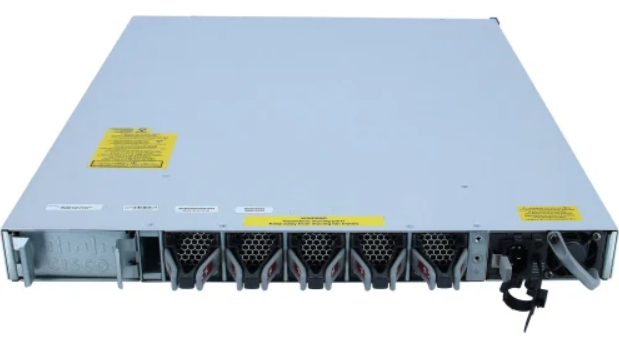
Today, Cisco switch prices vary from vendor to vendor. To get the best pricing & fast global shipping, below are a few things you can do:
● First, you need to partner with a reliable Cisco supplier. We don’t only deliver authentic Cisco switches & equipment. We also offer competitive pricing—this is possible because of our insider access to inventory and good pricing.
● Bulk ordering is an effective way of getting better pricing. So, if you’re buying multiple Cisco switches, ensure to check for discounts. Reputable distributors like us offer discounts on larger orders. Pro tips: ordering your switches with other accessories like power supplies & stacking kits will save you money.
● For fast deliveries, ensure to ask about the distributor’s stock availability. The right supplier should maintain real-time inventory visibility. This way, you can always expect your orders as quickly as possible.
● Checking for warranty and support matters a lot. Ensure your pricing covers Cisco warranty, licensing, and after-sales support.
Partnering with us today is an effective way to get better pricing and fast global delivery. With us, below are a few things you can expect:
● Authentic Cisco switches
● Competitive pricing
● Licensed software
● Quick global delivery
Wrapping up
Your choice of the right Cisco switches depends on a few factors, such as:
● Your network size
● Performance requirements
● Future plan for scalability
If you run a Small to Mid-Sized Business (SMB), we recommend choosing the Cisco Catalyst C9200L or C9300L Series. These cost-effective switches provide Layer 2/3 features, simple stacking, and PoE support. As such, they’re strongly recommended for smaller offices and branch deployments.
For enterprises, we recommend choosing the standard C9200 or C9300 model. For moderate flexibility & scalability, C9200 will certainly deliver effective solutions. The C9300 series is ideal for larger enterprises looking for top-tier security and high-performance systems.
For Data Centers and core networks, we recommend using top-tier switches, such as C9500 and N9K series. The catalyst C9500 model is specifically designed for core switching. It also supports up to 100G for speedy connection, redundancy, and high throughput.
For modern data centers, your perfect pick is the Cisco Nexus 9000 series. N9K offers 40G/100G support, ultra-low latency, and seamless connection with Cisco’s ACI. These offerings indicate that N9K is ideal for achieving greater scalability and faster network performance in data centers.
Bottom line: choosing your Cisco switch model based on your network’s current and future needs is crucial. It won’t only give you better performance and security. In addition, it’ll also help you to maximize returns on investment.
Need help picking the right Cisco Switch for your organization today? If yes, we’re more than ready to assist you. We won’t only give you expert guidance. In addition, we’ll supply you with genuine Cisco switches & accessories at competitive pricing.
Contact us now to discuss your infrastructure needs. With that, we’ll be able to give you authentic products that meet your needs and shipping expectations.
Related Post
Furniture is a must for an office or a home. It is available at varying price points as Read more
Wood is extensively used in making furniture around the world. Wood can be molded in any shape or Read more
In the current market condition, a major portion of the world's consumption depends on China. The product range Read more
Contact Us Get Free Quote!
* Please kindly fill out the form for inquiry
* we will reply to your inquiry within 24hours
